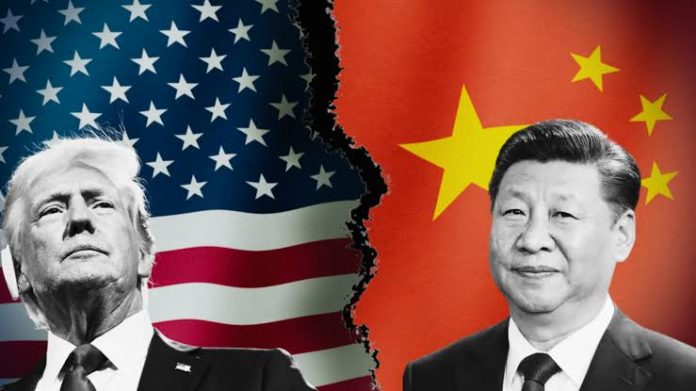China will impose tariffs of 15 percent on imports of coal and LNG from the US in retaliation for 10 percent levies on Chinese goods.
China will impose tariffs of 15 percent on imports of coal and liquefied natural gas (LNG) from the United States in retaliation for Washington’s 10 percent levies on Chinese goods.
China’s Ministry of Finance also announced on Tuesday that there would be 10 percent tariffs on imports from the US of crude oil, agricultural machinery, large-displacement vehicles and pick-up trucks.
The new measures were in response to the “unilateral tariff hike” by the US, it said, adding that Washington’s decision “seriously violates World Trade Organization rules, does nothing to resolve its own problems, and disrupts normal economic and trade cooperation between China and the United States”.
Beijing’s tariffs, which come into force on February 10, were announced shortly after US President Donald Trump said he would hold a call with his Chinese counterpart, Xi Jinping, in the next 24 hours.
On Saturday, Trump announced sweeping measures against its top trade partners, including Canada and Mexico, with goods from China facing an additional 10 percent tariff on top of the duties they already endure.
Trump said the measures aimed to punish countries for failing to halt flows of undocumented migrants and drugs, including fentanyl, into the US.
However, on Monday, he suspended his threat of tariffs on Mexico and Canada, agreeing to a 30-day pause in return for concessions on border and crime enforcement with the neighbouring countries.
“China’s retaliatory tariffs are a calibrated response rather than an outright escalation,” Julien Chaisse, professor at City University of Hong Kong specialising in international economic law, said.
“The measures demonstrate Beijing’s willingness to impose economic costs on Washington while maintaining flexibility for negotiation.
“The choice of a February 10 start date appears strategic. It allows time for a possible discussion between Trump and Xi which is creating space for last-minute diplomacy before the measures take effect. If talks between the two take place in the coming days, there is room for adjustments, partial exemptions or reciprocal gestures that could prevent a further spiral in trade tensions.
“That said, much will depend on Washington’s interpretation of these measures. If the US views them as a calibrated step leaving room for negotiation, this could set the stage for discussions rather than further escalation. However, if Trump sees this as a direct challenge, his administration could respond with additional trade restrictions. This would intensify the conflict.”
During his first term in 2018, Trump initiated a brutal two-year trade war with China over its massive US trade surplus, with tit-for-tat tariffs on hundreds of billions of dollars worth of goods upending global supply chains and damaging the world economy.
To end that trade war, China agreed in 2020 to spend an extra $200bn a year on US goods, but the plan was derailed by the COVID pandemic and its annual trade deficit widened to $361bn, according to Chinese customs data released last month.
Trump warned he might increase tariffs on China further unless Beijing stemmed the flow of fentanyl, a deadly opioid, into the US.
China has called fentanyl a US problem and said it would challenge the tariffs at the World Trade Organization and take other countermeasures, but also left the door open for talks.



